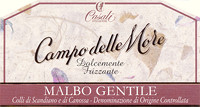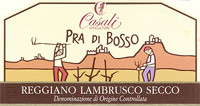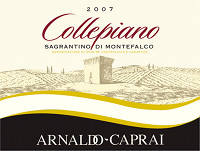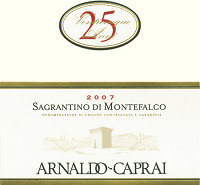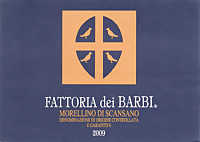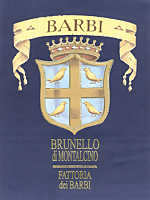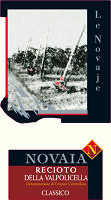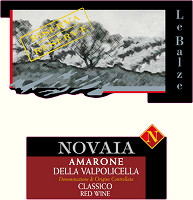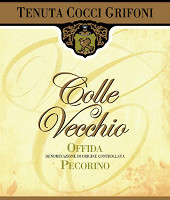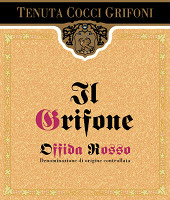|
Fortified wines have written memorable pages in history, not only for the
history of wine making. These wines have in fact contributed to the commercial
history and development of the 1800s, as well as associating their names with
military successes, wines beloved for the celebration of significant moments of
the society. In this sense, it can be mentioned, for example, the history of
Marsala - one of the greatest wines of Italy - a wine for which was created a
florid trading, protagonist of cut-throat commercial competitions. A wine of
long and glorious history, Marsala was a wine very appreciated by admiral
Horatio Nelson, who defined it as victory wine, also in occasion of the
famous battle of Trafalgar in 1805, in which he obtained his last and most
notable victory. A similar fate has been common to all the other glorious and
precious fortified wines, still today representing an extraordinary wine making
expression, such as Jerez - also known with the name “Sherry” - Port, Madeira
and Malaga.
The predilection of admiral Nelson for Marsala wine was such that, after having
tasted this wine for the first time, he ordered 500 barrels to be taken on
board. The success of Marsala - and of the other fortified wines of Spain and
Portugal - was such that from the ports of the respective production cities were
continuously sailing ships loaded with the precious barrels, of which most of
them destined to England. Moreover, some famous English families of merchants
moved to the places of production and started themselves wineries for the
production of these wines, such as Woodhouse and Ingham families at Marsala, or
Dow, Graham and Taylor at Port. The same happened for the famous fortified
Spanish wine - Jerez - as many of the wineries devoted to the production of this
wine have been established by families of English merchants. Jerez is the name
with which the famous city of Andalusia and its wine are today known in the
world, however in English speaking countries, the wine is still known with the
historical name of “Sherry”, a term coming from “Sherish”, name with
which the city was called at the times of Moorish dominion
Fortified wines are characterized by a particular productive element, common to
all wines belonging to this category. It is called fortified a wine to
which, in a particular moment of its production, is added a certain quantity of
wine distillate in order to increase alcohol volume. In Italy, this style of
wine is also called liquoroso, a category which must not be confused with
the liquoreux definition of the French, a term with which in France are
identified sweet and dessert wines, such as Sauternes. In France, fortified
wines are defined as Vin de Liqueur. The addition of alcohol also
produces other effects according to the productive tradition of each wine, last
but not the least, it effectively contributes to its keeping. Alcohol by volume
in these wines can also reach 20%, in some cases it can also reach 22%, and,
according to European laws, it cannot have an alcohol by volume lower than 12%.
From a historical point of view, alcohol was added to wines in order to let them
“survive” to the stress of the sea journey, kept in barrels loaded into ship's
holds, so they could reach their destinations in a drinkable and sound
condition. The hold of ships of two hundred years ago was certainly not the most
aseptic and welcoming place a wine could have, a reason that forced wine - also
because of the meteorological conditions and, in summertime, a high temperature
- to undergo remarkable transformations, therefore turning it into something not
so enjoyable. The most frequent destination of sea trade of wines was
England - something happening since the times of ancient Rome - whereas the hold
of ships were loaded at thousands of kilometers away, mainly in countries of the
Mediterranean sea. Journeys lasting many weeks, a time during which the wine
underwent substantial changes.
|
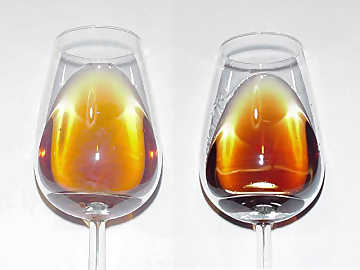 | |
| Color of mature fortified wines:
to the left, Marsala Vergine, to the right, Port | |
|
Merchants thought of adding to the barrels some wine distillate and, thanks to
the antiseptic properties of alcohol, they were successful in strongly limiting
the damages which unavoidably were caused by the journey. This practice also
changed organoleptic qualities of the wine, by adding a new dimension which was
soon appreciated by the English noble classes. But also the favor of admirals
and sailors, as they could have a “corroborating” and inebriating beverage,
without making use of the more alcoholic distillates. The custom of adding wine
distillate to these wines is now strongly associated to their organoleptic
quality and to their production, as today it is almost impossible to think of
them without the typical fortification. As in case of Marsala, a wine of a
oxidized and complex character and which before its “commercial” discovery by
John Woodhouse, it was produced with the perpetuo method (literally,
perpetual) and no fortification was added to the wine.
It seems that for the production of Port wine, in the style we know it today,
wine distillate has always been used, a technique probably used in some
monasteries. The legend has it that two English merchants, while they were
searching for new Portuguese wines to be shipped to their homeland, arrived to a
monastery near Lamego, and here a monk offered them a sweet and strong alcoholic
wine. To the amazement of the two merchants, the monk told them that wine was
produced by adding wine distillate to the fermenting must in order to keep its
natural sweetness. It was the end of the 1670s and the world and England
discovered the glorious Port wine: not really a wine; indeed a fortified must to
which the magic of time gives it elegance and absolutely unique qualities. The
production of the other great fortified wine - Jerez, or Sherry - brought the
intuition of the Solera y Criaderas system, a method today used also for
the production of other wines and, last but not the least, of distillates,
including the extraordinary brandy of Jerez.
Also Madeira wine, produced in the homonymous Portuguese islands of the Atlantic
ocean, has a special story to tell, a characteristic making it absolutely unique
in regard to all the other fortified wines. The factor characterizing Madeira is
in fact the particular production process, or - better said - a particular phase
of the production process. Madeira in fact undergoes a “heating” process
called estufagem consisting in keeping the cask in which the wine is
aging at a temperature sometimes reaching 55°C (130°F). This process tries to
“simulate” what happened in ship's hold in past centuries, during its journey,
when casks were subjected to the warm tropical climate. They in fact understood
the tropical “torture” to which Madeira was forced, was the main factor giving
the wine its particular personality. As Madeira does not travels in ship's holds
anymore - however knowing how that journey was beneficial to the quality of that
wine - today they try to “simulate” the tropical climate in the winery, by
leaving wine casks at a temperature and humidity similar to those of ship's
holds which transported it to the ports of the world.
A common characteristic to many fortified wines is the evident aroma produced by
the remarkable oxidation which develops during aging. This characteristic is
always considered as a serious fault in every wine; in fortified wines this is
considered a quality. It is not by chance in table wines, when it is being
perceived an evident oxidation, it is said the wine is maderized, as it
directly recalls the aroma of Madeira wine. This “fault” is also called in
Italy as marsalato, as it directly recalls Marsala wine. This particular
aroma, recalling in part the aroma of hazelnut, both to the nose and to the
mouth, is defined by producers and connoisseur of Jerez with the Spanish term
rancho. It should be said rancho does not refer to the effect of
oxidation only, but also - and in particular - to the effects of the particular
production technique used for Jerez.
Casks in which this wine is aging are left partially empty on purpose, a
procedure favoring not only oxidation, but also the development on the surface of
the wine of a particular yeast culture called flor. The development of
flor is not however an exclusive characteristic of Jerez wine. This
particular yeast culture is in fact fundamental for the production of one of the
greatest wines of Sardinia, Vernaccia di Oristano, which - it should be said -
it is a white wine and no fortification process is used for its production. The
container used for the aging of fortified wines is, in all the cases, the cask.
Fortified wines are always allowed to age in wood, not for getting the typical
organoleptic qualities commonly associated to these containers, indeed for
favoring oxidation, more or less strong, an absolutely typical quality for these
wines. Moreover, it should be said, as opposed to what happens for the
production of table wines, for which casks are usually replaced every three or
four years in order to restore the organoleptic influence of wood, in fortified
wines casks are rarely replaced.
A used cask in fact represents a high value for fortified wines, not only for
the fact wood pores are more “open” - therefore favoring oxidation - but also
for the fact it is strongly impregnated with the wine produced in past vintages
and its organoleptic qualities. The typical character given by wood is however
present in fortified wines, however, as opposed to other wines, in this case to
the tertiary impact of wood, is added the remarkable complexity given by time
and oxidation. It must however be said that, in order to keep their typical
personality, in fortified wines the wood character rarely plays the role of the
protagonist. Defining the aromatic profile of fortified wines is among the most
difficult tasks for the sense of tasters. Their aromatic qualities are in fact
so distant from what we usually find in table wines, sometimes expressed with
descriptors that, apparently, have nothing in common with wine.
This complexity strongly increases with time, as - it should be noted -
fortified wines can age in bottle for tens of years thanks to the high alcohol
content, an element keeping the wine and avoiding their decay and bacterial
contamination. Talking about mature fortified wines requires a radical change on
the terms and factors used for other mature wines. In many cases, producers
themselves release mature fortified wines, aged in their cellars for many years,
even for more than 10 years, a time making most of table wines decrepit. In some
cases, the aging time is impossible to determine because of the production
method, which can also provide for the adding of very old vintages, such as in
the case of Jerez - produced with the Solera y Criaderas method - and
which for this reason is never written the year of vintage on the label. Thanks
to these long aging times, fortified wines offer a remarkable complexity since
the moment of commercialization. Aromas of dried and toasted fruits, dried
flowers and candied fruits, are just some of the aromas which can be perceived
in fortified wines. To them are also added aromas of strong complexity, mainly
produced by the effects of oxygen and oxidation.
A wine aged for many years, as well as oxidized, can be thought as a wine having
a completely unbalanced gustatory profile, probably flat. Indeed, fortified
wines, in particular dry wines, offer to the palate an impeccable balance, in
which roundness and the high content of alcohol have a perfect balance with
acidity, in case of white wines, and a smooth astringency, in case of red wines.
The world of fortified wines is extremely vast, offering to the taster a wide
range of styles: from the extremely dry, such as Jerez Fino or Marsala Vergine,
to extremely sweet styles, such as Jerez Pedro Ximénez and some styles of Port.
Another characteristic of fortified wines is the appreciable taste-olfactory
persistence, which generally is very good and long, as well as the explosion of
flavors, always of remarkable intensity. With time, and this means tens of
years, fortified wines get a “softer” and more “austere” character, in which
roundness plays one of the main roles, sometimes velvety, without losing their
impeccable elegance and balance.
|


